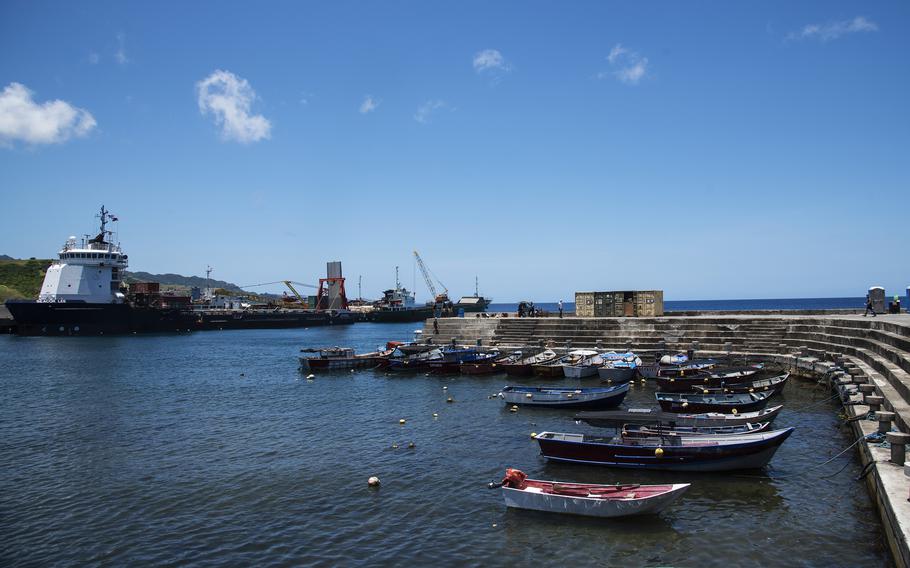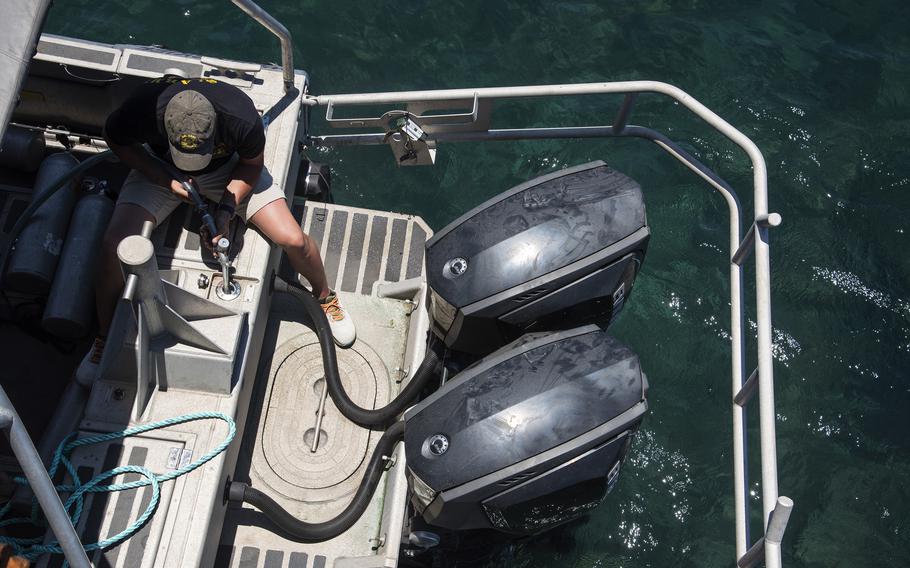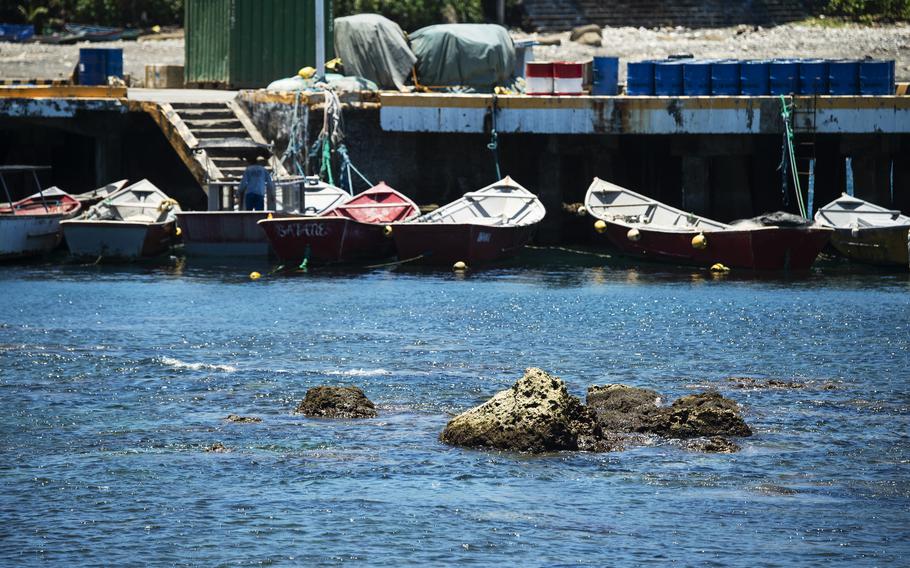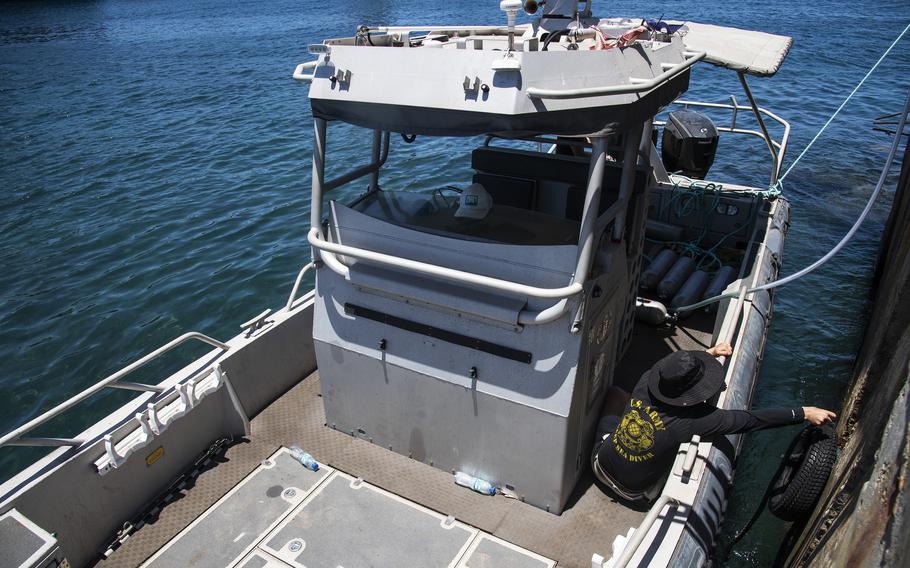
The Seacor Lee visits Basco Sea Port on Batan Island, Philippines, May 5, 2024. The U.S.-flagged support vessel delivered aviation fuel for the Balikatan exercise. (Jonathan Snyder/Stars and Stripes)
BASCO SEAPORT, Philippines — U.S. and Filipino army divers began clearing debris this week from this strategically important harbor on the northern Philippine island of Batan.
The improvements, which include deepening the harbor to allow visits by larger vessels, may take years, Capt. Ander Thompson, commander of the 7th Engineer Dive Detachment at Joint Base Pearl Harbor-Hickam, Hawaii, said at the port on Sunday.
Soldiers from the Hawaii-based 25th Infantry Division helicoptered onto Batan that day to rehearse an air assault — the sort of mission they may need to execute if conflict breaks out over Taiwan or in the South China Sea.
Batan — about 120 miles south of Taiwan — and several nearby islands are next to the Bashi Channel, which links the Philippine and South China seas, where Beijing has territorial disputes with many of its neighbors, including the Philippines.

A soldier from the 7th Engineer Dive Detachment at Joint Base Pearl Harbor-Hickam, Hawaii, fuels a boat while working at Basco Sea Port on Batan Island, Philippines, on May 5, 2024. (Jonathan Snyder/Stars and Stripes)
The channel is a route for China’s navy to the east coast of Taiwan and the Pacific. It’s also a potential transit point for U.S. forces headed to the Taiwan Strait from Guam.
The air assault was part of the annual Balikatan exercise involving 16,000 mostly U.S. and Filipino troops that began April 22 and wraps up with a ceremony Friday.
While helicopters buzzed over Batan, army divers equipped with rock-breaking equipment and a large crane prepared to clear the harbor. Large rocks protrude from the water during low tide, blocking access to a pair of concrete boat ramps.
The port includes a 400-foot pier that can accommodate cargo ships. A U.S.-flagged support vessel, the Seacor Lee, was there Sunday delivering aviation fuel for the Army’s helicopters.

U.S. soldiers from the 7th Engineer Dive Detachment at Joint Base Pearl Harbor-Hickam, Hawaii, are helping to remove large rocks blocking access to boat ramps at Basco Sea Port on Batan Island, Philippines. (Jonathan Snyder/Stars and Stripes)
Thompson said the work crew — 17 U.S. divers and signal soldiers and nine divers from the Philippine army’s 525th Construction Battalion — will work until early June, but the project is a multiyear effort.
The divers are using power tools to break up the rocks so that the crane can remove them.
It’s hard to say what the port might be used for in the future, but it could accommodate U.S. Navy ships, Thompson said.
In March, the Philippine Inquirer reported on talks between U.S. and local officials over the port project.
“The Philippine Navy and the Armed Forces are always preparing for any eventuality across the spectrum of conflict from peace to crisis to wartime,” a Philippine Navy spokesman, Commodore Roy Vincent Trinidad, said in the report.
The project is a response to Chinese threats, said Grant Newsham, a retired Marine colonel and senior researcher with the Japan Forum for Strategic Studies in Tokyo.

A soldier from the 7th Engineer Dive Detachment at Joint Base Pearl Harbor-Hickam, Hawaii, secures a boat while working at Basco Sea Port on Batan Island, Philippines, on May 5, 2024. (Jonathan Snyder/Stars and Stripes)
“It is true of course that improved port facilities in the Batanes islands do help the local economy and are also useful in responding to natural disasters (i.e. typhoons) that blow through this area frequently,” he told Stars and Stripes by email March 20. “But at the end of the day, the interest being shown to this part of the Philippines is driven by the [Chinese] aggression.”
The deepened port should, at a minimum, be able to support U.S. and Philippine destroyers and smaller vessels, Newsham said.
It would be extremely useful in the event of conflict over Taiwan and even shore-based anti-ship missiles on the island could cover a large area, Newsham said.
“Chinese ships trying to swing around the southern end of Taiwan or even land troops in the southern part of Taiwan will find themselves running a gauntlet of anti-ship missiles,” he said. “And the coverage provided by missile-armed ships operating out of Batanes makes things even worse for [China] — as the missile ranges are extended and from different attack vectors as well.”